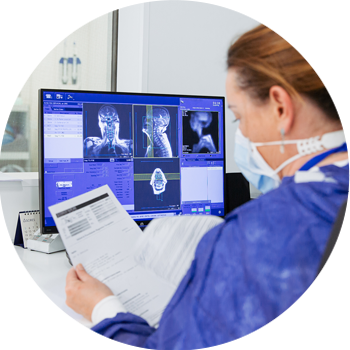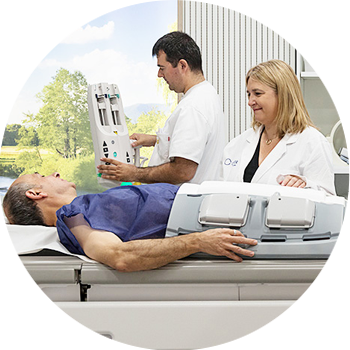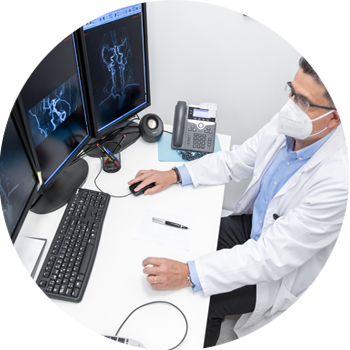Our sub-millimetre precision linear accelerators allow us to apply the most sophisticated and effective forms of treatment, such as image-guided radiation therapy or volumetric and intensity-modulated radiation therapy. Always using the latest technology and in multidisciplinary teams, the Ascires professionals design a radiotherapy treatment tailored to each patient.
Why Ascires?

 For our precision radiotherapy modalities
For our precision radiotherapy modalities
We have been pioneers in the introduction of the most sophisticated treatment techniques in Spain, such as intensity modulated radiotherapy, image-guided radiotherapy and surface image-guided radiotherapy (structured light). These are our main treatment modalities: Image-guided radiation therapy and structured light radiation therapy (IGRT), intensity-modulated radiation therapy (IMRT), image-guided radiation therapy and structured light radiation therapy (IGRT), stereotactic body radiation therapy (SBRT) and respiratory gating.
 For our human resources
For our human resources
Our multidisciplinary Radiation Oncology teams are composed of highly qualified medical professionals, physicists, nurses and health technicians. Some of these professionals have been responsible for introducing advanced radiotherapy techniques in our country and training generations of radiation oncologists in new treatment modalities.

For our commitment to maximise the quality of life of the patient
Both medically and physically, we develop various projects to mitigate the side effects of treatment and improve the patient’s living conditions during treatment.
- Nutrition: With the same Imaging technique with which radiotherapy (CT) is planned, we monitor a patient’s nutritional status and evolution. This way, if there is any risk that the pathology is causing malnutrition (cachexia), we are able to be prepared in advance with the intervention of a Nutrition specialist, who provides the necessary food resources and supplements to the patient.
- Gamification with Virtual Reality (VR): We apply gamification with Virtual Reality glasses to develop the respiratory gating technique with maximum precision and comfort for patients. A total of 150 patients have already benefited from this Virtual Reality system.

